Motor development does not proceed at the same rate for every child. While there are certain time periods and guidelines by which most children will have reached certain milestones. However, some children take longer than others, while others can sit or walk much earlier.
Don’t compare your baby’s development with other children, and don’t be jealous of the child in the toddler group who is already walking at nine months: your child will also learn to walk, and it’s absolutely no problem if he or she can’t do it freehand even at 15 or 16 months.
In some cases, however, the baby’s development is delayed. There are various reasons for this, but they can often be solved with physiotherapy. In this text, you can read when and how you can help your child.
Table of contents
Motor Development Begins In The Womb
The development of a baby’s motor skills does not begin when he or she is born. The child’s motor development begins much earlier, namely at a very early stage of pregnancy.
As early as the 7th to 8th week of pregnancy, the first fetal movements can be detected in the ultrasound, and at around twelve weeks, your little one is still doing lively gymnastics in your belly – and there is still plenty of room for it. Only when your unborn child grows larger and the space becomes more limited will you feel its movements.
For many women, this is the case between the 18th and 20th week. With these exercises, your baby naturally trains its muscles unconsciously, but intensively, and thus also its motor skills.
From Reflex To Conscious Movement: Motor Development In The First Year Of Life
Of course, your newborn baby won’t be doing any lively capers yet; after all, it first has to get used to gravity. In the womb, it floated in the amniotic fluid and was practically weightless – like an astronaut in outer space.
In addition, at this age it is still strongly controlled by its reflexes and therefore less capable of conscious movements. However, motor development picks up speed quickly: When your baby is 5 months old, he tries his first turning movements and may already manage to turn from his back to his stomach (or vice versa).
At 6 months, your baby is already consciously reaching for an interesting toy and occupying himself with it. By 9 months, your baby will be pulling himself up on the furniture and exploring the world by crawling or sliding.
At around 13 to 14 months, most toddlers can finally walk hands-free. The speed at which babies develop and the number of milestones they reach in the first year of life is unique in childhood. Later, his motor development is much slower.
Gross And Fine Motor Skills
A basic distinction is made between gross and fine motor skills. In this context, “coarse” does not mean “rough” or “clumsy”, but refers to the large-scale body movements and those necessary for locomotion.
Fine motor skills, on the other hand, include the small movements of the feet and hands. In the first year of life, this fine and gross motor development should take place in the baby:
- Body control: holding head alone, sitting up, learning to sit.
- Locomotor skills: learning to crawl and crawl, walking (by hand and freehand).
- Hand-mouth coordination: grasping and holding, letting go.
- Dexterity: pinch grip.
This development in the baby goes hand in hand with the development of cognitive and social skills. If your baby’s motor development is delayed or inhibited for any reason, this often has an impact on his mental and social skills.
The reason for this is this: a child whose motor skills are restricted can only have a few stimulating experiences with his environment, which in turn has an impact on the other areas of development. Therefore, always keep a close eye on your child’s motor development and, if you are unsure, talk to your pediatrician too early rather than too late.
When your baby is 6 months old, for example, he or she should be able to hold a toy with one hand and pass it from one hand to the other. For example, a 6-month-old child can shake a rattle and enjoy the sound of the toy. If the baby is 5 months old, he has usually not yet learned this skill or is still practicing.
When Your Child Learns To Use His Hands And Fingers
Motor development also includes fine motor development in babies. The following table gives you an overview of the age at which your child acquires certain skills.
However, please remember that motor development can vary greatly, especially in children in the first year of life, and this is perfectly normal. That is why pediatricians always give tolerances because children are not small machines.
So don’t worry if a 6-month-old baby in the crawling group can already crawl on his own, while yours is still taking its time. Do not compare your child with children who are particularly early with all developmental steps – this happens only very rarely. The vast majority of children tend to stick to this timetable.
Newborn
Reacts with innate grasping reflex, for example, includes a finger when touched.
Babies Up To 3 Months
Explore their hands and fingers, look at and move them, suck on them.
Baby Up To 5 Months
Targets toys, grasps them with both hands.
Baby 6 Months To 7 Months
Also picks up toys individually, changes hands, moves toys.
Baby Up To 8 Months
Applies scissor grip, takes smaller objects between thumb and index finger.
Baby 9 Months To 12 Months
Can grasp a ball with both hands.
Baby Up To 12 Months
Applies tweezer grip, grasps tiny items with fingertips of thumb and index finger.
As you can see, baby’s development is not rigidly linear, but can overlap with other developmental steps.
When Should My Child Be Able To Do That?
As far as the motor development of gross physical abilities in the first year of life is concerned, about 80 to 90 percent of children follow this timetable:
Baby 3 Months
Can hold its own head in the prone position.
Baby 3 Months To Baby 6 Months
Begins to turn independently, first to the side, then from stomach to back and finally from back to stomach.
Baby 6 Months To Baby 10 Months
Begins to move independently: crawling, crawling, rolling, sidling, on all fours.
Baby 10 Months
Your baby can sit freely.
Baby 9 Months To 15 Months
Pulls himself up on furniture and objects, walks along them.
Baby 9 Months To 18 Months
Learns to walk by hand or freely.
Toddler 18 Months
Your baby can walk freely.
Again, the pace of development varies greatly from baby to baby: while some babies 6 months old can already crawl, others don’t start doing so until they are 10 months old. This difference is particularly noticeable when it comes to walking freely.
Some children are already walking freely at 9 months, while others are only able to do so at 17 or even 18 months. Here, motor development is often genetically programmed: A child of parents who themselves walked very early or very late often develops at the same pace.
The First Milestone: Turning And Rolling Around
When your baby is up to 6 months old, he or she reaches the first milestone of motor development. Around the fifth to sixth month of life, most children manage it.
- Turn themselves around their own axis.
- Turn themselves from their tummy to their back.
- Or vice versa from back to stomach – but this is more difficult.
If your baby, 6 months old, does not yet make any effort to do this or finds it a little difficult to turn, you can support him or her. To do this, hold your child gently in the supine position by its hands and turn it gently to the side position. You can also try to motivate him to turn onto his side with the help of a music box (or another interesting object).
Once the muscles have been strengthened through frequent practice, the baby will turn in all directions all by itself between 6 months and 7 months. At this point, your child’s motor development is ready for the next steps: the baby is trying to move on its own.
At 8 months, your child should be able to turn. If it can’t yet, please see your pediatrician. But don’t worry: motor development is not a strictly linear process. Some children skip this milestone to sit and crawl right away.
No one can predict exactly how fast the baby will develop. So please never leave him or her unattended – even for a very short time! – on the couch or changing table. Always have a hand on your child’s body to prevent a fall caused by sudden kicking or turning over.
The Second Milestone: Sitting
Your child’s motor development progresses in leaps and bounds when your baby can sit on his own. This development usually takes place between the seventh and ninth months of life and thus shows quite a wide range in time.
By the way, being able to sit means that babies can sit down on their own and maintain an upright position without help. If possible, do not let your baby sit until it has learned to do so on its own: Early sitting often results in posture problems later on and should therefore be avoided.
However, you can practice with your baby: let him pull himself up by your hands in the supine position. However, the strength for this must come from your child, so that it slowly straightens up, vertebra by vertebra. In doing so, he trains his muscles, which are important for his further motor development.
The Third Milestone: Crawling
When your baby is between 6 months and 10 months old, he starts to move around: At first, many children crawl or sidle before they learn to crawl properly. The quadrupedal gait is a huge step forward in a baby’s development .
Now it can explore the world on its own and, after a little practice, can reach quite astonishing speeds. However, crawling is not that easy: At first, children sway back and forth in a quadruped stance but do not yet find a way to move further.
The best way to practice this is to allow your child’s feet to push off against a wall, for example. You can perhaps lure your baby with a toy and see if he or she does not move in your direction.
Although many parents eagerly wait for their baby to finally be able to crawl, this type of locomotion is not important for his further motor development. Some children even skip this milestone altogether and prefer to walk right away.
Others find very creative forms of locomotion: These children slide forward on their bottoms, for example, or roll. All of this is perfectly normal and no cause for concern.
The Fourth Milestone: Walking
The first steps towards independent walking are taken when your child pulls himself up on furniture and objects and begins to walk along with them. Therefore, screw the furniture to the wall if possible and make sure that a chair, for example, cannot tip over.
At this stage of the baby’s development, you can get him to grab a toy and hold on to it with only one hand. This will help your baby practice its sense of balance. For the same reason, it makes sense for your child to be able to push things around the house, such as a doll’s pram, a laundry basket, or his high chair. A baby walker is also ideal for this purpose.
There comes a point in a baby’s development when he or she simply let’s go and stands freely. The first free steps are now no longer far, usually, children run these at first necessarily (for example, from a standing position towards the parents) and then startle.
At this point, motor development in babies is complete – and your child is able to move independently to discover the world and gain new impressions.


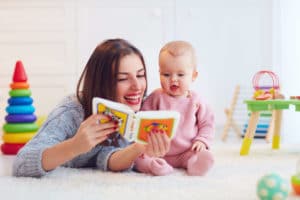
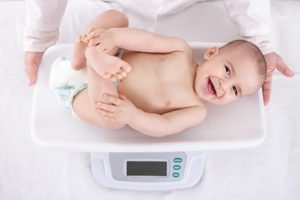

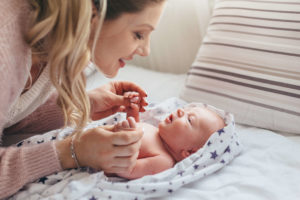
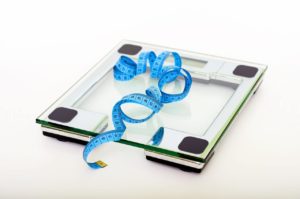
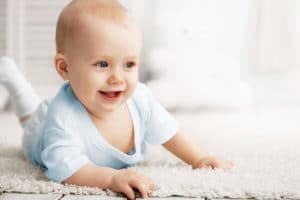
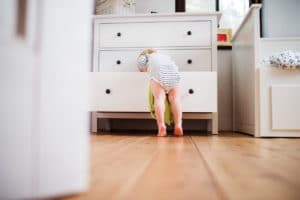
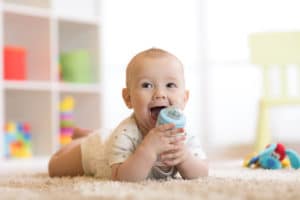
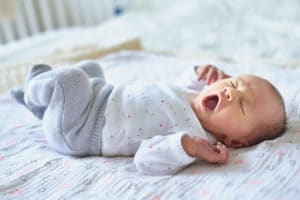

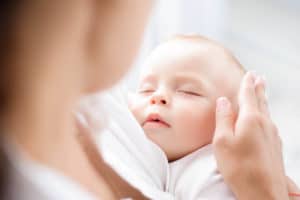
5 thoughts on “This Is How Your Baby’s Motor Development Progresses In The First Year Of Life”